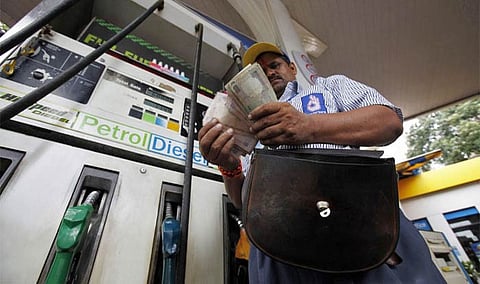Soaring Fuel Prices
Petrol and diesel prices are touching the roof again and the politics surrounding it has also reached its crescendo. The Narendra Modi-led government is taking a lot of flak from various quarters because many feel that costlier petrol and diesel are due to elevated tax rates. Over the past 12 days, petrol prices have increased by up to Rs 3.37 per litre, while diesel prices are up by Rs 3.02 in four metros. There is now a growing public clamour for a reduction in taxes, but neither New Delhi nor the States have committed to such a step. Petrol and diesel do not come under the Goods and Services Tax (GST), and therefore fuel prices vary across States. Coming back to Assam, Chief Minister Sarbananda Sonowal has not given any commitment to reduce the VAT prices on fuel. The persistent rise in transport fuel prices is largely attributed to the surge in crude oil prices and high excise duty. The price of Brent crude oil, the global benchmark, is currently at over $79 per barrel. Diesel prices, which have already hit unprecedented levels, set new records across the country. In Delhi, Kolkata, Mumbai and Chennai, it is selling at Rs 68.75, Rs 71.30, Rs 73.20 and Rs 72.58 per litre respectively. Diesel, to a large extent, drives the Indian economy and surging prices are now burning holes in pockets. It must be mentioned here that the government permitted daily price revisions of petrol and diesel in June 2017 to help state-run oil marketing companies (OMCs) cut losses. As per IOC data, petrol is priced at Rs 41.80 per litre in Delhi. On this, the government levies Rs 36.03 in taxes, pushing the fuel’s retail price to Rs 77.83 per litre in the national capital, as on May 25. Taxes on the product work out to 86 per cent of the cost. Similarly, diesel is priced at Rs 43.31, and the total tax incidence is Rs 25.44 per litre. Taxes on the product work out to 59 percent of the cost. It has to be remembered that taxes have remained on the higher side for the last four years – throughout the NDA regime which have helped the exchequer to mop up additional revenue. In the fiscals 2016-17 and 2015-16, growth in the government’s revenue from petroleum products was 25 per cent each. This is much higher than in 2014-15 and 2013-14, when growth stood at around 9-10 per cent each. 2017-18’s data is available up to December 2017 only, and hence is not comparable with the preceding year. In 2016-17, the government’s revenue from the petroleum sector was Rs 5.24 lakh crore, accounting for 3.5 per cent of GDP. Clearly, the NDA government has been milking the sector for higher tax revenues, and has denied consumers the benefit of lower international crude oil prices that prevailed around the time that the NDA assumed power.
At one level, consumers of petrol, diesel and other petroleum products might find it hard to swallow that when the global prices of crude oil were down sharply, there was no commensurate reduction in the retail prices. And now that the global prices of crude are yet again creeping up slowly but surely, the oil marketing companies are quick to pass the burden to the consumers. In other words, it pocketed the gains of low crude prices while transferring the pain of high crude prices to the consumers. Modi was fortunate that oil prices in the international market started slipping around the time he took over as Prime Minister. Having ruled high through the later part of the UPA decade, at one time, crude sold for $130 a dollar in the global market. And only last year, during Modi’s third year as Prime Minister, it was $32-35 a barrel. However, after resuming the upward movement a few months ago, now the global price of crude ruled upwards of $80 a barrel. For three years, thanks to low international prices, the government is reported to have gained over Rs two lakh crore annually. Besides, the government saved a considerable sum annually by weeding out the undeserving from the vast pool of subsidized cooking gas users. This money was put to good use on infrastructure, subsidizing highly cheap cooking gas cylinders to lakhs of rural households, on building tens of lakhs of toilets, etc. The point being that the savings from relatively cheap global crude prices were used for augmenting the public goods. So, at another level, the retention of gains stemming from cheap oil prices globally was put to good use and, therefore, the consumers should not begrudge these gains. But still the Modi government faltered in its resolve to abolish the old administered price mechanism and the bane of oil companies before its advent when it put on hold the hike following the rise in crude prices globally a few months ago. The oil marketing companies were restrained from passing on the small hike in the price of LPG to the consumers. With the West Asian situation getting uncertain, thanks also to the idiosyncrasies of US President Donald Trump, disruption in supplies and consequent pressures on crude prices cannot be ruled out. In such a scenario, the government needs to put all of its hands on the desks to tackle the situation in case the global crude oil prices continue their northward journey.

